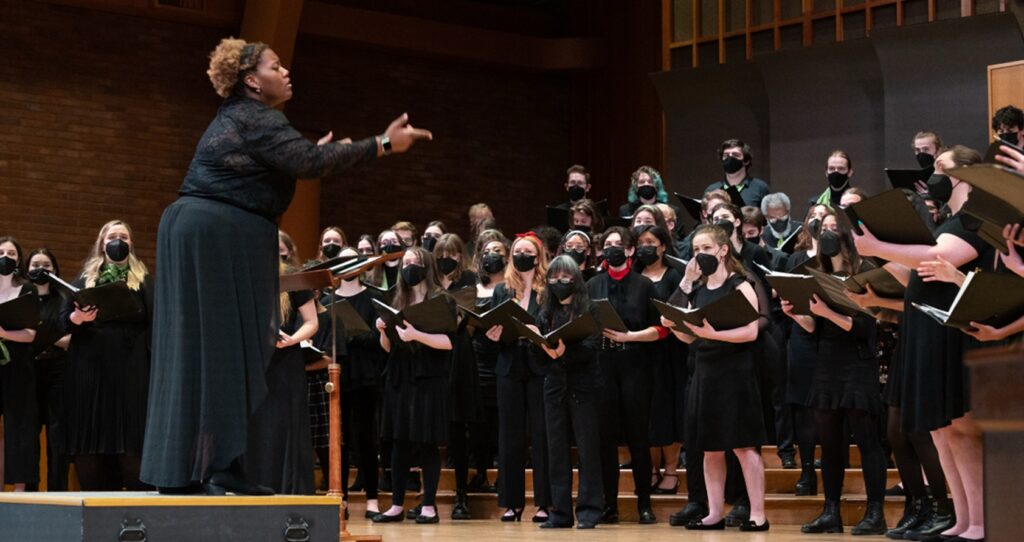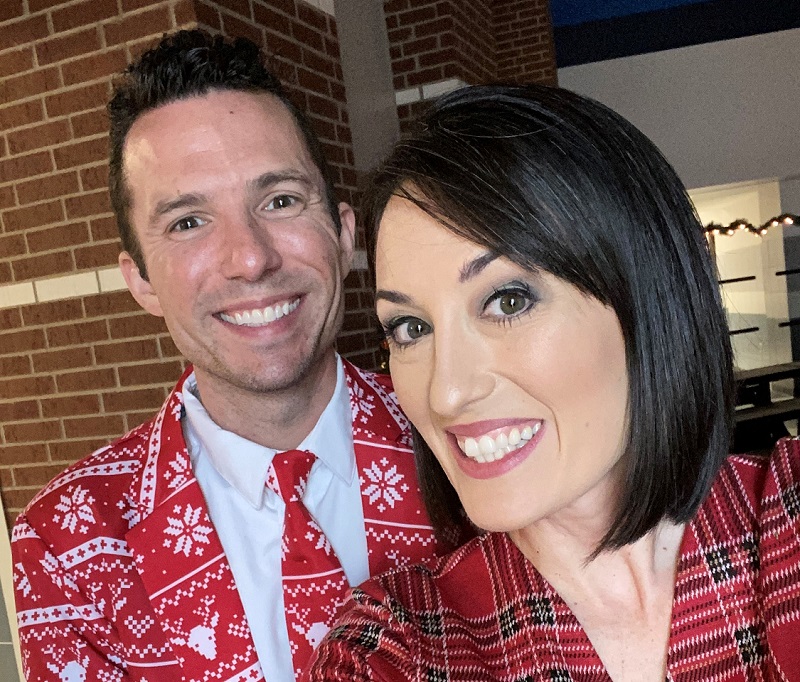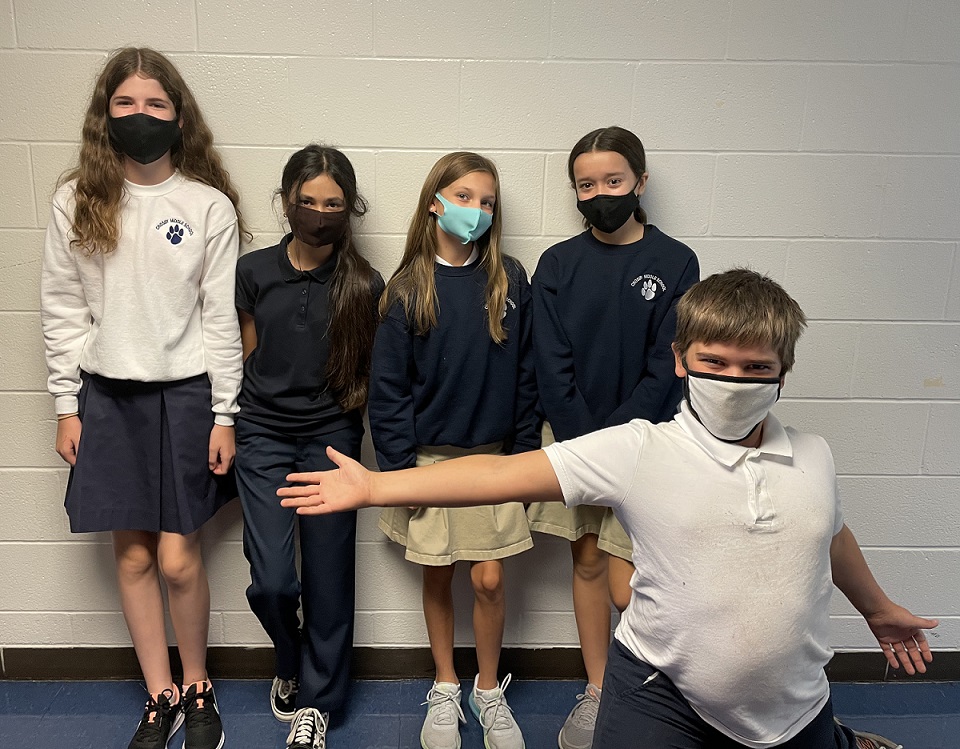Tagged Under:
Case Study: Starting the Youth Chorus of Central Texas
Local music educators joined forces to create the Youth Chorus of Central Texas to bring musical opportunities to students.
The Youth Chorus of Central Texas (YCCT) serves singers in grades 3 through 12 who do not have access to sequential musical instruction in their educational environment or who seek additional experiences not afforded them otherwise.
Although membership is through audition, no qualified singer is denied admission due to financial circumstances. Tuition is kept intentionally low, and more than 50% of the funding for YCCT members comes from community grants and donations.
The chorus typically has 60-70 singers in two choirs. Our students come from 28 schools in 13 ZIP codes, which gives life to our motto: “Bridging our commUNITY through song!”
Due to the pandemic, the chorus suspended operations from March 2020 until August 2021, taking a “fermata season.” However, the chorus just reopened in September 2021 with 44 singers in two choirs — a healthy number in light of recent events. We have color-coded masks for our parts groups, so it’s easy to identify who is singing which part.
Let’s Start at the Very Beginning — Our Background
From its onset in 2013, YCCT had some very fortunate backing. Lynne Gackle and I co-founded the chorus. Together, we have a combined 70+ years of experience in choral music-making and complimentary skills. Before becoming the director of choral activities at Baylor University, Gackle was the founding director of the Gulf Coast Youth Choirs (GCYC), a highly renowned organization in Tampa, Florida. I am a Waco native with significant local ties.
We both had the heart and desire to address the musically underserved singers of central Texas. By using the GCYC organizational materials as an example and benefiting from its successful business model, YCCT was well on its way to realizing the dream. There was no reason to reinvent the wheel; thoughtful tweaking was all that was needed to write our bylaws and our nonprofit 501c3 application.
Giselle Vento Banda, a 2021 Yamaha “40 Under 40” music educator, serves as co-director of YCCT. She is responsible for conducting, selecting music, teaching choreography, as well as other musical and administrative activities.
“The Youth Chorus of Central Texas enriches our community, singers, staff, and interns,” she says. “My early involvement with the chorus played a major role in my comfort and preparation in the classroom. As a new school year arises, I believe growth will come for both the singers and myself.”
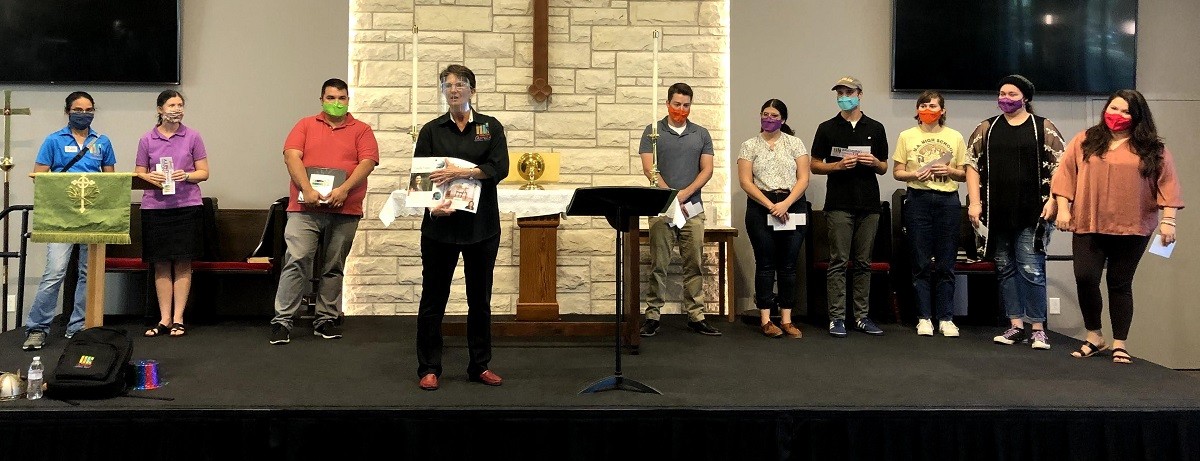 To help with YCCT’s launch, we selected an eclectic board of directors with a passion for children’s singing. Current board members include local public-school music teachers, Baylor music education faculty members, parents, choral musicians and community advocates. We also employ a business manager (CPA) and have an attorney who volunteers advice when called upon.
To help with YCCT’s launch, we selected an eclectic board of directors with a passion for children’s singing. Current board members include local public-school music teachers, Baylor music education faculty members, parents, choral musicians and community advocates. We also employ a business manager (CPA) and have an attorney who volunteers advice when called upon.
YCCT enjoys a unique partnership with Baylor’s choral music education students. Each semester, three to six interns work with the chorus. They gain valuable field experience, and the choristers enjoy more individual attention than the two directors can provide. We often hire a Baylor pianists and other instrumentalists to accompany the choir.
In searching for rehearsal space, YCCT opts for locations that are centrally located and not automatically associated with a dominant institution in the city. The neighborhood needs to be welcoming and accessible to all. We may rehearse or perform in a church or school, but it is understood that we are a community chorus and an independent nonprofit organization.
Upon the initial launch of the chorus, we announced our intentions via a website and a feature article in Waco Today, the monthly magazine of the Waco Tribune-Herald. We mailed packets of brochures to school music teachers and church choir directors and placed ads in programs for local symphony concerts and civic theater productions. Flyers were posted at YMCAs and libraries and at designated neighborhood hubs throughout the city. With all these things in place, the most nerve-wracking days were those leading up to the auditions. We had no idea if anyone would turn up. The first year, we had 35 singers.
Since its inception, the chorus has benefited from a diverse mix of financial sources. Our initial efforts were funded by a $7,000 unspecified grant from a local arts board dedicated to new organizations. Subsequent grants for equipment came from Creative Waco and the Baylor University Philanthropy and Public Service Program. Annual requests for financial aid for singers are granted via a designated fund from the Waco Foundation. In-kind partners include our T-shirt vendor, graphic designer and printing service.
Rehearsal: A Three-Ring Circus
I compare our rehearsals to a three-ring circus. I am the ringmaster, giving instruction to the entire combined chorus. I provide sequence, teaching tools and methodology for everyone. After the standard of excellence and specific practice assignments are clear, assistant directors coordinate the two individual choirs and coach interns.
 Interns act as small group facilitators for practice pods. Older choristers are spaced strategically among younger singers to ensure all have helpers nearby to aid with tasks like finding their place on the printed page, marking scores and, most importantly, providing a vocal support and encouragement. We are aware of when and how we employ the use of the “surrogate” teacher.
Interns act as small group facilitators for practice pods. Older choristers are spaced strategically among younger singers to ensure all have helpers nearby to aid with tasks like finding their place on the printed page, marking scores and, most importantly, providing a vocal support and encouragement. We are aware of when and how we employ the use of the “surrogate” teacher.
Our covenant to the choir members is: “I will not ask you to perform any task alone for which I have not provided the necessary tools or instruction; in return, I ask that you give your best effort with your very first try.”
All our teaching methods and activities focus on YCCT’s values:
- discipline (singers will learn that musical excellence is achieved through dedication and discipline)
- respect (singers will learn that valuing and respecting others creates unity)
- kindness (singers will learn that music creates a safe environment in which kindness toward one another is vital)
- service (singers will learn that giving ones’ musical gift away is a valuable use of time and talent)
- individual creativity (singers will learn that creating music allows for beauty and self-expression)
- leadership (singers will learn a sense of personal responsibility, which extends beyond the choral experience into daily life)
The directors and interns prep together so that everyone knows all the notes and rhythms, all the parts (horizontally and vertically), each individual’s role in the ensemble, the form and the challenges of each selection. No one walks into rehearsal unprepared.
Tools for musical and logistical readiness are prepared so that all singers can achieve maximum success in a minimum amount of time. All efforts are made to eliminate the tyranny of the printed page. Score manipulations can include cutting and pasting to remove all but the relevant vocal line or doling out a few measures at a time. The use of different colored paper for different songs keeps everyone on the same page.
The YCCT Model in Action
Here’s how we assign parts:
- 1 and 2 for 2-part music
- A, B and C for 3-part music
- yellow, blue, green and red for 4-part music
Singers have labeled and color-coded name tags, which tell them their part assignments.
Example: Singer 2 B green sings part 2 on 2-part, the middle part on 3-part, and the third part on 4-part music.
Here’s an exercise where EVERYONE highlights the SAME part (scores may be used by any singer)
- 2-part music — everyone highlights part 2
- 3-part music — everyone highlights the middle part (students can identify their part as above the highlighted part, the highlighted part or below the highlighted part)
- 4-part music — everyone highlights part 3
Following the lesson sequence allows everyone to be successful. Skipping steps inevitably will leave someone behind. If singers already “know the answers,” they can just move through all the steps more quickly.
Subsequent repetitions are called REHEARSAL. Rehearsing an ensemble is NOT the same as teaching. Rehearsing is implementing and practicing what is already learned from the teaching.
Here’s how we introduce new knowledge:
- Precede a new nugget of knowledge with a verbal cue so that all students are aware that NEW TEACHING is going to happen.
- For example, tell students to put their fingers on measure 4 and say, “Now, look up for instructions.”
This is an example of our rehearsal speech. Giving instructions in seven words or less requires the instructor to be clear and concise and doesn’t waste valuable time with invaluable chatter.
Everybody Sings!
Changing groups shapes learning. Placing singers in the different choirs should be done with intentionality and purpose.
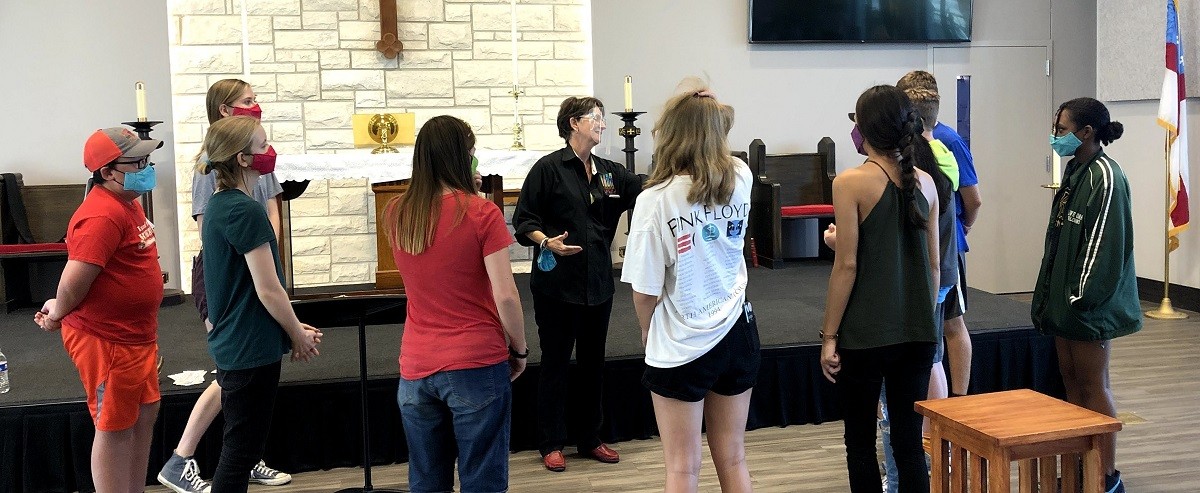 One thing we have discovered is that if the older singers are always asked to serve as models for their younger peers, their own needs are not served. Therefore, we ask the collegiate interns to model for the older chorus and, in turn, the staff models vocal and teaching techniques for the interns. Each rehearsal begins and ends with a brief staff meeting and debriefing that especially focuses on interns’ needs and questions.
One thing we have discovered is that if the older singers are always asked to serve as models for their younger peers, their own needs are not served. Therefore, we ask the collegiate interns to model for the older chorus and, in turn, the staff models vocal and teaching techniques for the interns. Each rehearsal begins and ends with a brief staff meeting and debriefing that especially focuses on interns’ needs and questions.
Male interns are asked to sing with the young men whose voices are changing. This gives the students a model of a voice and helps balance the predominantly treble choir. It is YCCT’s policy to allow boys to sing through their change; some choruses age out the boys when their voices drop. We often add our small group of changing voices to the soprano 1 part down an octave. This adds a fine richness to the choir while allowing the boys the luxury of adjusting to their new voices without the added pressure of suddenly having to “hear” a new harmony part. Conversely, if a boy soprano is asked to sing tenor at school, he can still sing soprano at YCCT if he so desires.
During performances, we may opt to add an intern and even staff voices for special effect. For example, a popular jazz Christmas selection was performed with interns singing the challenging verses and the older choristers singing the choruses.
An additional benefit of expanding the singing to include the staff is that it provides an extra level of security for students when they are singing multiple challenging parts in a new acoustical environment. We learn together so that we can perform together. We came upon this idea out of necessity, and it has become a joyful expectation — another manifestation of “commUNITY through song!”
Real Fun
We’re often asked, “Is it fun or is it real?” (i.e., meaning is it kiddie play, or is it substantive learning). My answer is always, “It’s real fun!” We strive for a high level of comprehension in a short amount of time.
Seeing the singers for 90 minutes each week creates challenges in rehearsal attentiveness and weekly retention. Our lessons are crafted to be presented in person with child-friendly practice materials for use at home.
In other words, we do not use the honor choir model of learning notes on one’s own prior to rehearsal. Many children do not have musically trained parents to help them interpret the instructions; some do not have access to the necessary technology; few have the knowledge base to be expected to follow a score on their own until they have received instruction. The honor choir model is quite useful but does not serve our younger choristers. Our older self-motivated singers have used it occasionally with success.
We do encourage our singers to listen to specific recordings to aid in memorization; we provide the links after the music is learned.
Real fun includes performing at a variety of community events, including Holocaust remembrances to the Nutcracker ballet. Singing the national anthem at a Baylor’s Lady Bears basketball game has become an annual tradition as has a field trip to a Broadway touring company production. Each year several YCCT singers have been selected to Southwestern American Choral Directors Association (SWACDA), Texas Choral Directors Association (TCDA) or American Choral Directors Association (ACDA) honor choirs. We begin our year with summer camp and finish with an end-of-school social.










